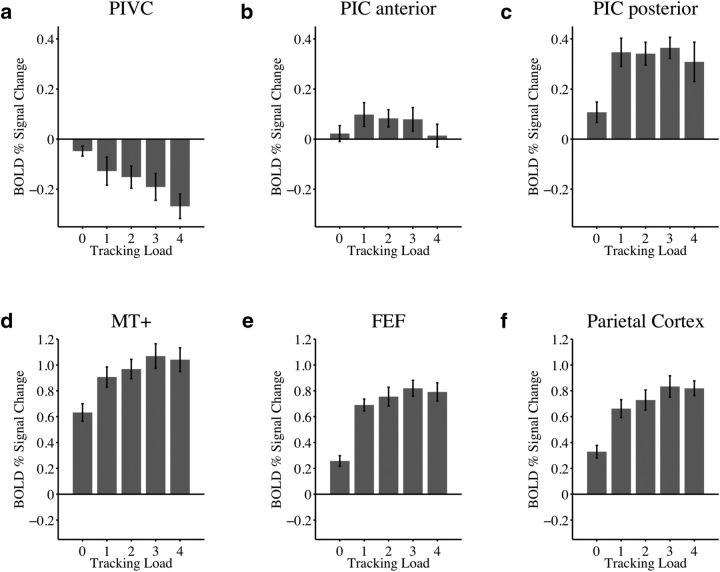Figure 4.
Activations during passive viewing and attentional tracking of moving disks in the control experiment. Here, a blank baseline was used and passive viewing of moving disks was included as another condition of interest, in addition to active multiple-object tracking. Shown are data from eight subjects who also participated in the primary experiment. x-axis, Experimental conditions during passive viewing of moving disks (“tracking load 0”) and during conditions where 1–4 disks were tracked. y-axis, Average BOLD percentage signal change (with standard error of the mean, SE) from blank baseline (0 on y-axis). a, Compared with blank baseline, activity during passive viewing of moving disks was suppressed in the PIVC, but suppression effects were significantly augmented during increasing levels of attentional load. These inverse load effects were comparable to those found in the primary experiment (Fig. 2a). b, Activity in the anterior PIC was not significantly different from baseline in either passive viewing or tracking and did not differ between these two conditions. However, as in the primary experiment (Fig. 2b), activity decreased with increasing attentional load (in particular during track 4). c, Conversely, activity in the posterior PIC was enhanced over baseline during both viewing and tracking, and was stronger during tracking than viewing. Replicating previous results (Fig. 2c), the PIC posterior was not modulated by increasing levels of attentional load. d–f, Activity in control regions (MT+, FEF, posterior parietal cortex) was significantly enhanced in viewing versus baseline and stronger during tracking than viewing. Activity changes as a function of attentional load were similar to those observed in the primary experiment (Fig. 2).

